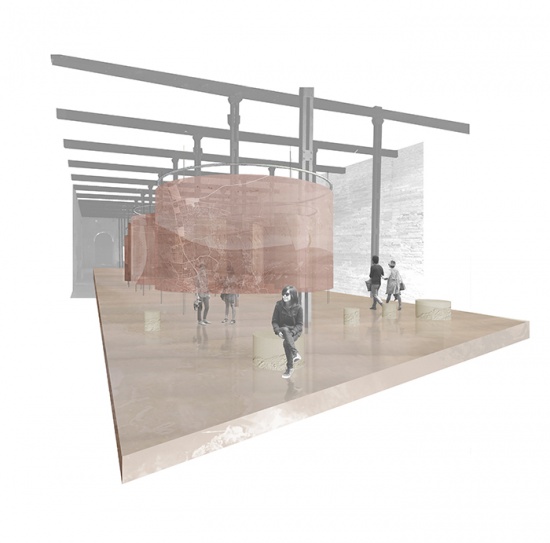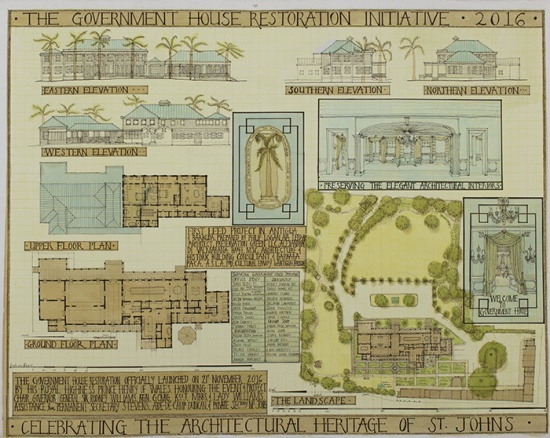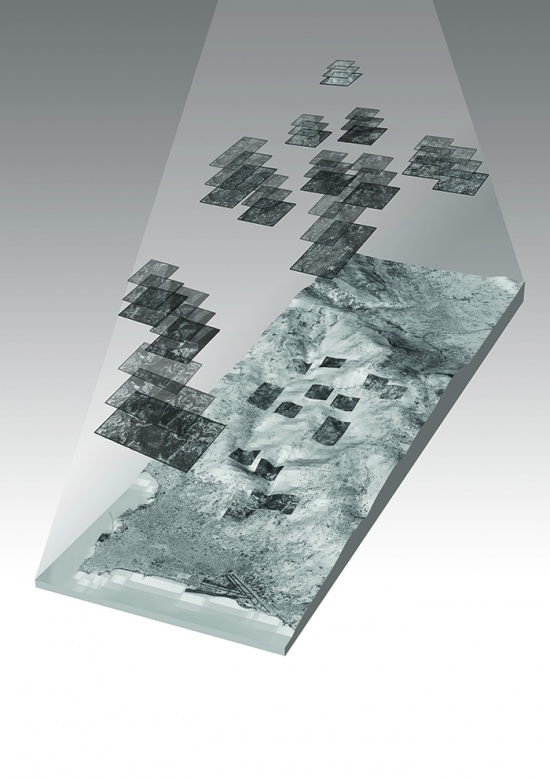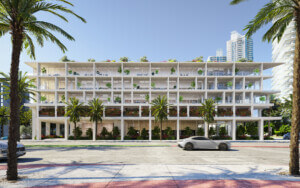The 16th Venice Architecture Biennale curated by Yvonne Farrell and Shelley McNamara will feature national pavilions from several first-time exhibitors. Responding to the Biennale’s Freespace theme in manifold ways, the new participants deal with everything from humanity’s relationship to the environment to faith and religion.

Saudi Arabia
Commissioned by the Misk Art Institute, Saudi Arabia’s first Biennale pavilion, called Spaces in Between, will explore both the fragmentation and connection brought on by uneven urbanization and suburbanization. Turki and Abdulrahman Gazzaz, the brother founders of architectural design consultancy Brick Lab, will be realizing the project, which includes an installation of resin cylinders (the petroleum origin of which references the nation’s oil reserves that have fueled rapid urban development), sand from different regions of Saudi Arabia, and infographics.
Venue: Arsenale

Holy See
The Vatican commissioned curator and historian Francesco Dal Co to select ten architects to contribute to Vatican Chapels, a collection of small chapels by architects from across the globe on Isola di San Giorgio Maggiore. The Holy See hopes that the chapels will not feel tied to the traditional church form, only requiring that they each have a pulpit and an altar, and have the ability to be reconstructed elsewhere.
Visitors will enter Vatican Chapels through the Asplund Pavilion, which will present an exhibition of drawings by Swedish architect Gunnar Asplund that is informed by his 1920 Woodland Chapel. Designed by Venice-based MAP Studio, the Asplund Pavilion will serve as both an anchor and as a point of departure for the rest of Vatican Chapels. The participating architects are Andrew Berman (United States), Carla Juaçaba (Brazil), Eduardo Souto de Moura (Portugal), Eva Prats & Ricardo Flores (Spain), Francesco Cellini (Italy), Javier Corvalán (Paraguay), Norman Foster (United Kingdom), Sean Godsell (Australia), Smiljan Radic (Chile), and Terunobu Fujimori (Japan).
Venue: Isola di San Giorgio Maggiore

Pakistan
Curated by Karachi-based architect and scholar Sami Chohan, The Fold will be Pakistan’s first presentation at the Biennale. Exploring the dense, informal settlements of Pakistan’s most populous (and the world’s third largest) city, Karachi, The Fold considers open space in the face of constant contraction. As a city that has grown 20-fold in the past 70 years, Karachi’s constricted public space often cannot take the form of parks and other traditional open spaces. Instead, public space grows from the social interactions that limn the corridors of these narrow settlements—constructing a dense form of urban “openness.”
Venue: Giardini della Marinaressa – Giardino di Levante

Antigua and Barbuda
Curated by landscape architect Barbara Paca, Antigua and Barbuda’s exhibition at Venice will be known as Environmental Justice as a Civil Right. The exhibition centers on three sites in Antigua and Barbuda, using them to interrogate the relationship between architecture and the environment by way of models, drawings, and other objects.
Venue: Don Orione Artigianelli, Dorsoduro 919

Guatemala
Stigma, curated by Stefania Pieralice, Carlo Marraffa, and Elsie Wunderlich, explores notions of virtual and utopian architecture. Responding to the crises of language, narrative, and meaning in postmodernity, the projects from Regina Dávila, Marco Manzo, Adriana Padilla Meyer, Studio Domus, UR Project, and Elsie Wunderlich imagine a “virtual city.” The pavilion will exhibit an array of models, monuments, and “large planispheres.”
Venue: Palazzo Albrizzi-Capello, Cannaregio 4118

Lebanon
Lebanon’s first pavilion at the Biennale will gather numerous individuals, architects, artists, researchers, and institutions to reflect on unbuilt land and its use and disuse. Primarily focusing on the Beirut River and its watershed, the centerpiece of The Place that Remains, as the pavilion will be known, will be a comprehensive 3-D territorial model. The pavilion is curated by architect and Assistant Professor of Architecture at the Lebanese American University Hala Younes.
Venue: Arsenale
[googlemaps https://www.google.com/maps/embed?pb=!1m18!1m12!1m3!1d11121.408953772161!2d12.342916809924194!3d45.43572791299231!2m3!1f0!2f0!3f0!3m2!1i1024!2i768!4f13.1!3m3!1m2!1s0x0%3A0x326075048d72cf38!2sDon+Orione+Artigianelli!5e0!3m2!1sen!2sus!4v1526049177751&w=600&h=450]











